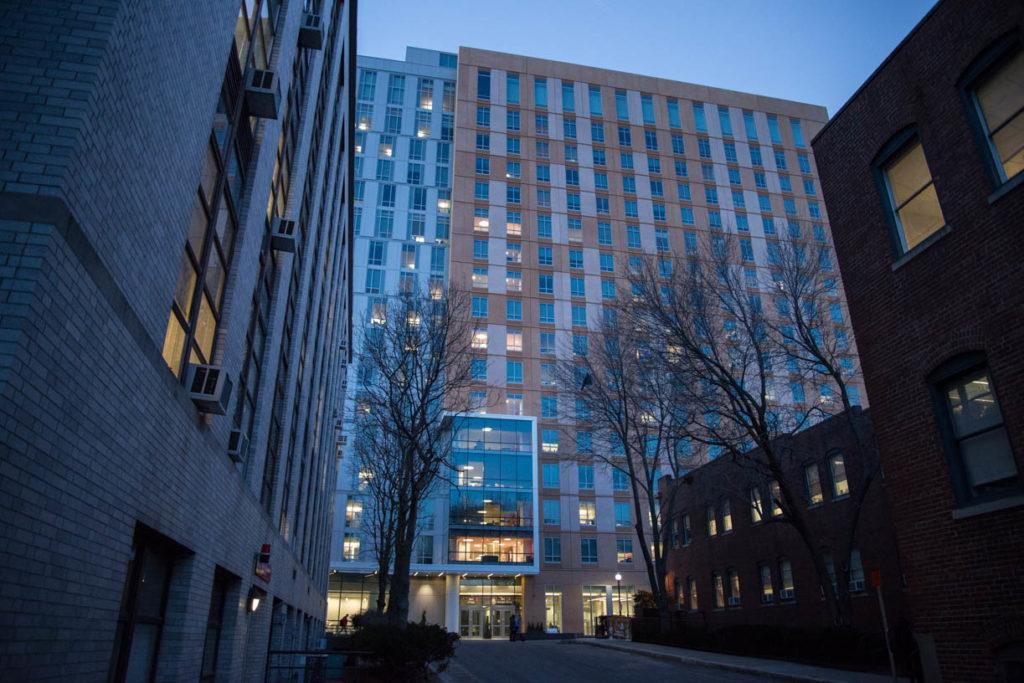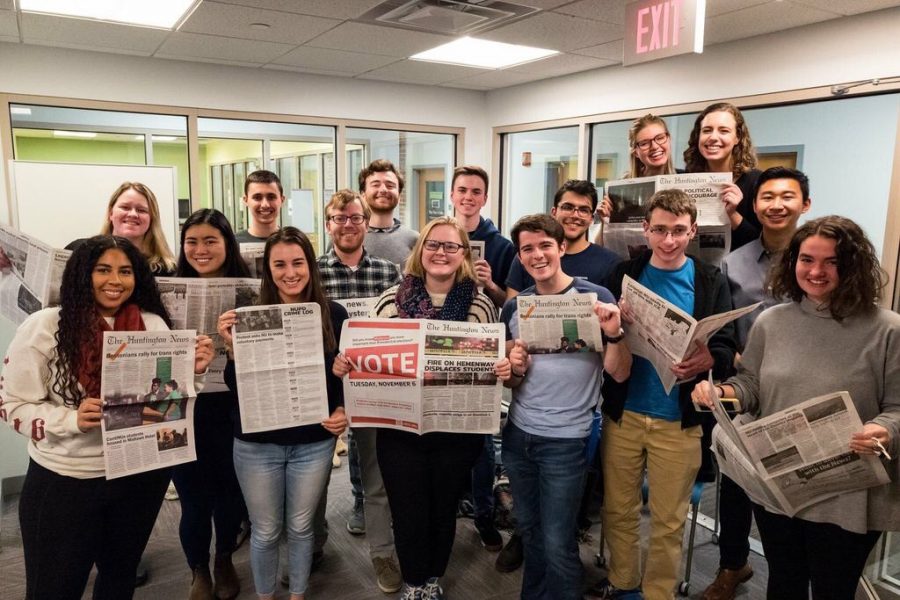Lack of affordable housing on campus has long been a flashpoint: Between Northeastern students and the administration, and between the university and Boston residents. Even as Northeastern plans more land development, the price of housing both on and off campus is rising.
In 2014, Mayor Martin J. Walsh outlined three strategic goals regarding student housing: Create 18,500 new student dormitory beds by 2030, reduce the number of undergraduates living off campus in Boston by 50 percent and ensure all students reside in safe and suitable housing.
Northeastern University took “safe and suitable” to mean luxury.
Many spaces available on campus follow an enhanced pricing structure. The cheapest bed available to freshman undergraduate students is an economy quad, which costs $3,110 per semester and has limited availability. Given a four-month semester, that’s the equivalent of $777.50 in monthly rent, according to News archives. The most expensive option for freshmen is $5,350 for a semi-private enhanced single, or $1,337.50 monthly.
For upperclassmen, the cheapest option is $3,470 per semester for an economy triple, or $867.50 a month. The most expensive option, with the exception of special housing for students with documented accommodations, is $6,970 per semester for an enhanced studio single—$1,742 a month. Many students are also required to buy meal plans, which range from $1,475 to $3,600 a semester.
Thousands of students choose to live off campus not just because the university cannot host all of them, but because it’s cheaper. Jumpshell data from 2015 lists the average rent for a one-bedroom apartment in Roxbury at $1,450 a month. In Mission Hill, that number is $1,500. One-bedroom units in the South End cost $2,300, while Fenway/Kenmore units are $1,940.
Many students cut that cost much further down by splitting the price of rent in apartments with multiple rooms. Some will even overcrowd apartments illegally. According to a 2014 Boston Globe Spotlight report, in a survey of 266 students living off-campus in Boston, nearly one-third of students questioned said at least five undergraduates were sharing living quarters.
Northeastern does offer relatively affordable spaces on campus in buildings like 153 Hemenway—a leased property—and Rubenstein and Burstein halls. However, these do not come without their own well-documented issues. Students living in these spaces have dealt with slanting floors, broken doors, exploding radiators and pests such as mice and cockroaches.
It does not seem fair that students living on campus are split between two options: Live in an affordable unit that is barely maintained, or be driven into debt paying for a luxury dorm room.
Walsh’s goal of forcing universities to create housing for students is noble, but it is too simplistic. There must be incentives for institutions to create affordable residential units, too. Of course, that is not a priority. The Boston Planning and Development Agency has no reason to pay attention until university housing becomes so expensive that units are left empty, and the likelihood of that happening is extremely low. A more probable scenario is that wealthy students will fill the residence halls and push out students who can’t afford them.
Over time, as Northeastern builds more luxury units, low-income and middle-class teenagers will not even be able to consider attending the university because there will be no way they could live here. Northeastern’s alleged commitment to diversity needs to include a commitment to affordable housing for students in order to attract applicants from a variety of socioeconomic backgrounds.
Right now, the West Village residence complexes, International Village, Davenport Commons and the newest residence hall, East Village, all follow an enhanced pricing structure. The situation is not slated to get any better. When completed, the residence hall on Burke Street will join those luxury bed spaces.
Another component of Northeastern’s Institutional Master Plan, the redevelopment of Burstein and Rubenstein halls, could involve “new apartment or dormitory style student housing, academic and commercial uses.” While uncertain, this is a potential cause for concern, as 227 affordable beds (some of the few on campus) could turn into more upper-scale housing.
The Huntington News editorialized on this issue when Walsh first took office in 2014, writing that the city should build more low-income housing. We now believe that this may not be the best course of action. The City of Boston is already having difficulty with its housing infrastructure, and university students should not be the ones to occupy affordable units over low-income residents who have lived here for generations. We implore the university to house its own students.
We at The News call on the Northeastern administration to prioritize affordability in its future development. There is no need to partner with developers who specialize in luxury housing. Instead, build normal residence halls with bedrooms, living areas and communal floor kitchens. It is far more effective for spacing, and it requires fewer appliances, resulting in less spent on plumbing, maintenance and energy. The communal kitchens would force people to talk to their neighbors, introduce people to new cultures and foster diversity.
We hope that Northeastern will consider practical solutions for its students over the bottom line.















